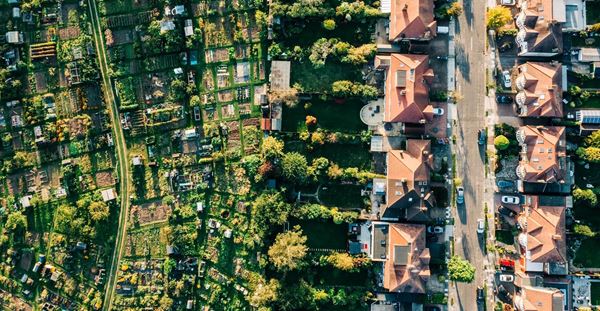How many people would walk more than 10 minutes to catch a train or a rapid bus service? How many people can easily get to a train or public transport hub by driving, wheeling or rolling? How many people would rather drive the entire trip because it is (or perceived to be) cheaper, quicker and more comfortable?
Major transport projects like Sydney Metro, Cross River Rail and Suburban Rail Loop have the potential to transform Australian cities. However, if new station precincts and mass transit services are to benefit the community, beyond the people living and working within a short distance to the stations, investment in first and last leg solutions is needed.
What is a First and Last Leg Solution?
The ‘first and last leg’ of a journey refers to the trip to and from a mass transit station. We use the term ‘first and last leg’ rather than ‘first and last mile' as it is not defined by the length of the trip. It includes a wide range of trips, from short walks in dense urban centres to longer outings from remote areas to train stations or bus stops – also noting that travel time often matters more than travel length for multimodal trips.

First and Last Leg concept and catchments around station
How to maximise access to public transport stations?
City-shaping rail and road-based public transport services can, and should, divert trips away from private cars and contribute to enhancing our public places for people rather than vehicles. New mass transit services (trains, metros, light rail and bus rapid transit) have capacity to serve large volumes of passengers, improving the movement of people of all abilities and improving the efficiency of travel between existing and future centres.
However, to maximise the social, environmental and economic benefits provided by new transport services these, should be accessible to the wider community rather than just the residents or workers close to stations. To achieve this, we need systematic investment in the first and last legs of those journeys to better connect people, whilst activating key places along the way between the trip origins and destinations and the station.

First Last Mile Strategic Planning Guidelines approach
Do we need stronger multi-stakeholder commitment?
First and last leg solutions are varied, multimodal and range from convenient active transport infrastructure to local shuttles and on-demand services. They include park and ride facilities, multimodal fare integration and mixed-use development. They benefit not only users, but also public transport operators and local businesses along the way and at stations. They require coordinated planning, design and implementation of placemaking and transport options between an array of stakeholders and levels of government. Public and private stakeholders must be involved.

First Last Mile Strategic Planning Guidelines approach
What tools and methods can we use?
The First Last Mile Strategic Planning Guidelines were developed by Arcadis IBI for Los Angeles Metro but the approach is universal to other jurisdictions. These guidelines provide a resource for local authorities, public and private organisations to update plans, strategies, programs land-use plans, business cases and other tools linked to significant public investments in mass transit projects. It has a handy toolbox to easily develop layouts of access networks to train and public transport stations areas.

First and Last Leg concept and catchments around station
The Butterfly Model was developed in the Netherlands to quantify first last leg gaps and advance land use and transport investment around transport hubs. The model aims to measure and better understand the relationship between the transport network (movement) and land use (place) and their associated functions within the public realm. It has been used in the Netherlands and in New Zealand to identify performance gaps between the current movement and place context around stations, and the desired outcomes – evaluated with score targets for each function, as shown in the figure below.

Example of Butterfly Model applied to a future metropolitan station
This tool helps identify key gaps and provides a framework for the development of first and last leg solutions, especially when supported by specific performance indicators such as public transport ridership increase (per capita), travel time and travel distance indicators, time of connection between modes, number of jobs and population in public transport catchment, number of connections per journey, or multimodal trip fare.
Creating better door-to-door journeys
Station precinct benefits can be harnessed by investing in First and Last Leg. Not only can it support a shift away from cars in high and low-density areas, but it can also contribute to increasing active transport and public transport patronage, while benefiting local communities and businesses at stations and along the first and last legs.
Proven tools and methods are available for us to develop desirable First and Last Leg access networks. It is now a matter of whether relevant stakeholders decide to systematically implement end-to-end public transport development approaches, and to invest in these solutions.
Contact Marion Guesnier to know more about First and Last Leg: Connecting people and increasing public transport reach.





